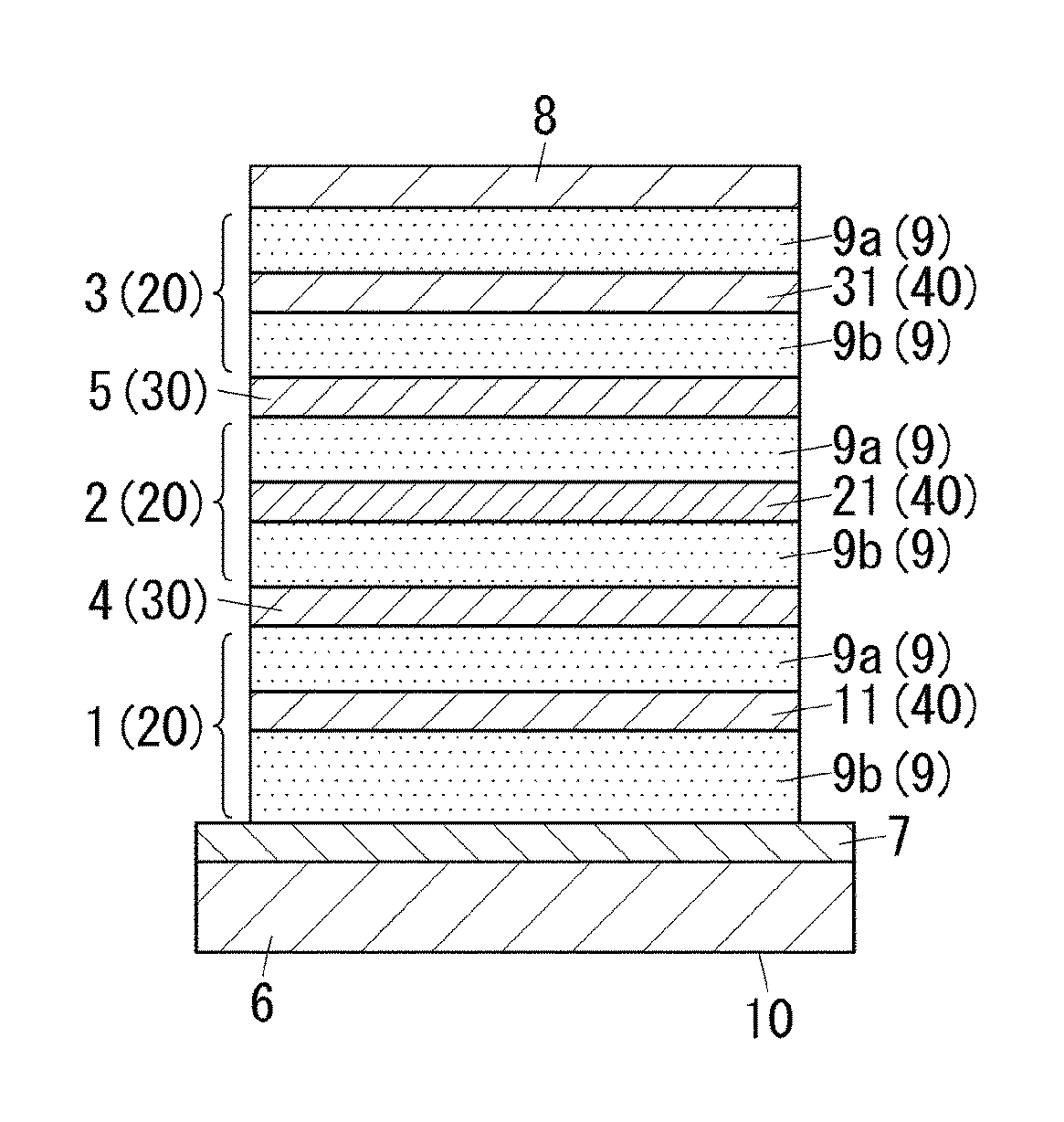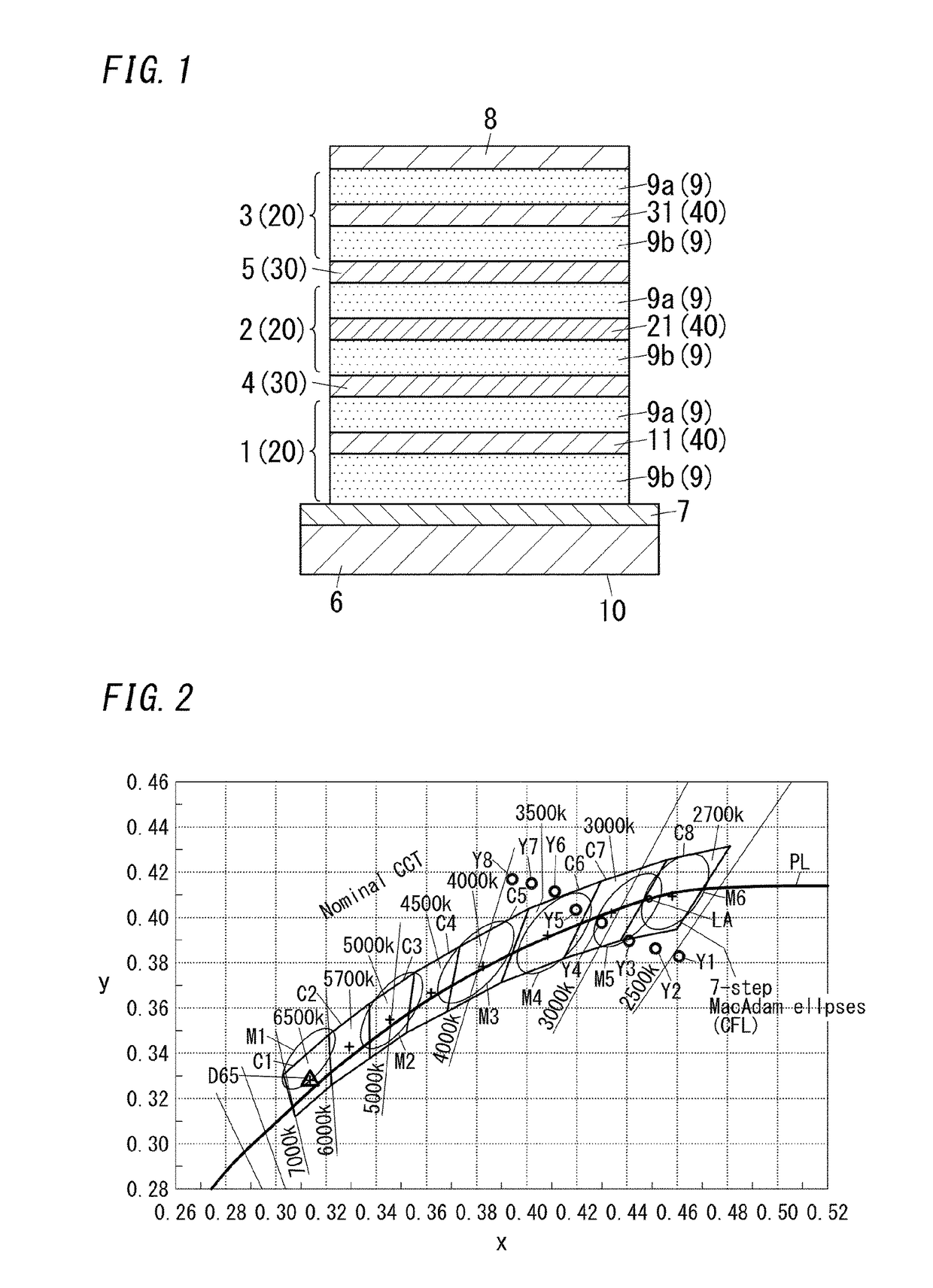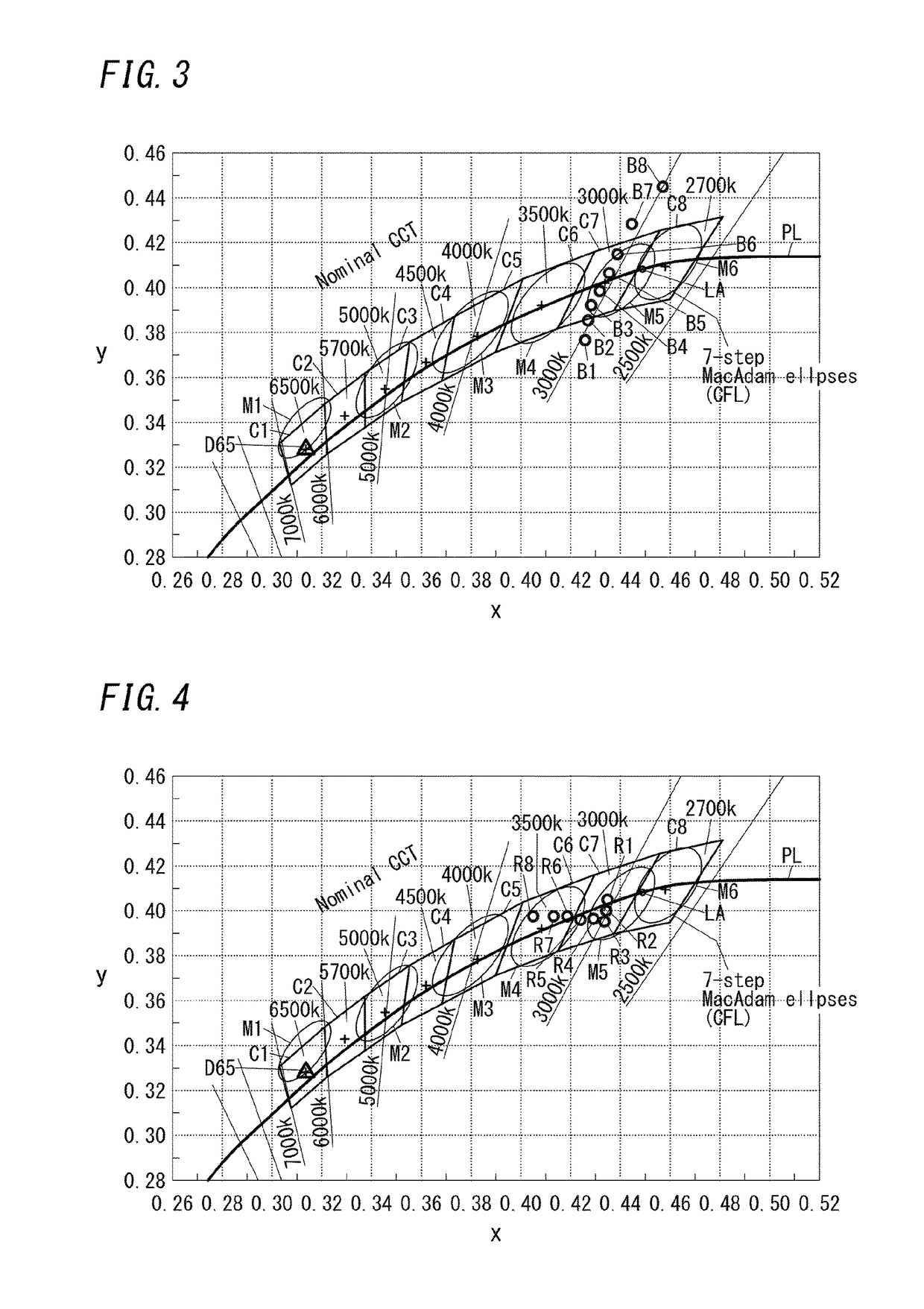Organic electroluminescent element
a technology of electroluminescent elements and organic electroluminescent elements, which is applied in the direction of phosphorescent light-emitting units, solid-state devices, chemistry apparatus and processes, etc., can solve the problems of low luminous efficiency, reduced total luminous efficiency, and low luminous efficiency of organic electroluminescent elements
- Summary
- Abstract
- Description
- Claims
- Application Information
AI Technical Summary
Benefits of technology
Problems solved by technology
Method used
Image
Examples
first embodiment
[0019]FIG. 1 shows an example of an organic EL element 10 of the first embodiment. The organic EL element 10 has a multi-unit structure including multiple light-emitting units 20. The multi-unit structure is a structure in which multiple light-emitting units 20 stacked in thickness direction are arranged so as to be connected electrically in series between an anode and a cathode. The organic EL element 10 has a triple-unit structure that includes a first light-emitting unit 1, a second light-emitting unit 2, and a third light-emitting unit 3 as the light-emitting units 20. The organic EL element 10 may include two or more further light-emitting units in addition to the first light-emitting unit 1, the second light-emitting unit 2, and the third light-emitting unit 3.
[0020]The organic EL element 10 further includes interlayers 30, a substrate 6, a first electrode 7, and a second electrode 8. Each interlayer 30 is interposed between adjacent light-emitting units 20. A first interlayer...
second embodiment
[0059]FIG. 5 shows an example of an organic EL element 101 of the second embodiment. This organic EL element 101 is different from the first embodiment in a structure of a second light-emitting unit 2. The second embodiment and the first embodiment are the same in components other than the second light-emitting unit 2. The same components as the first embodiment shown in FIG. 1 are attached with the same reference signs, and therefore descriptions thereof will be omitted from the following explanation made to the second embodiment.
[0060]The second light-emitting unit 2 mentioned above is formed to contain a red light-emitting material. This red light-emitting material is provided in a form of a layer which is on a surface, close to the first electrode 7, of the yellow light-emitting layer 21 and defines a red auxiliary light-emitting layer 22. This red auxiliary light-emitting layer 22 can contribute to minor adjustment of an emission color of the organic EL element 101.
[0061]As a r...
third embodiment
[0063]FIG. 6 shows an example of an organic EL element 102 of the third embodiment. This organic EL element 102 is different from the first embodiment in a structure of the third light-emitting unit 3. The first embodiment and the third embodiment are the same in components other than the third light-emitting unit 3. The same components as the first embodiment shown in FIG. 1 are attached with the same reference signs, and therefore descriptions thereof will be omitted from the following explanation made to the third embodiment.
[0064]The third light-emitting unit 3 mentioned above is formed to contain a red light-emitting material. This red light-emitting material is provided in a form of a layer which is on a surface, close to the first electrode 7, of the blue light-emitting layer 31 and defines a red auxiliary light-emitting layer 32. This red auxiliary light-emitting layer 32 can contribute to minor adjustment of an emission color of the organic EL element 102.
[0065]As a result ...
PUM
| Property | Measurement | Unit |
|---|---|---|
| peak emission wavelength | aaaaa | aaaaa |
| peak emission wavelength | aaaaa | aaaaa |
| thickness | aaaaa | aaaaa |
Abstract
Description
Claims
Application Information
 Login to View More
Login to View More - R&D
- Intellectual Property
- Life Sciences
- Materials
- Tech Scout
- Unparalleled Data Quality
- Higher Quality Content
- 60% Fewer Hallucinations
Browse by: Latest US Patents, China's latest patents, Technical Efficacy Thesaurus, Application Domain, Technology Topic, Popular Technical Reports.
© 2025 PatSnap. All rights reserved.Legal|Privacy policy|Modern Slavery Act Transparency Statement|Sitemap|About US| Contact US: help@patsnap.com



